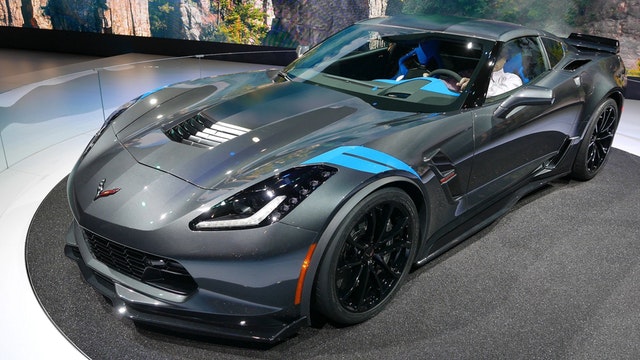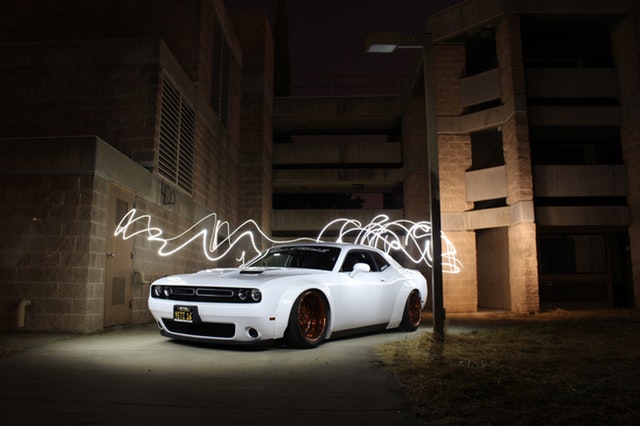A turbocharger or supercharger can magnify your engine’s horsepower and propel you into the fastest lane possible. But how do they work?
If there’s one takeaway from turbochargers and superchargers, it’s that both involve power. By compressing the air that flows into the engine (a process known as forced induction), turbochargers and superchargers distribute additional power to the engine by pumping more fuel into a cylinder. The cylinder then produces more power with every explosion—boosting the RPMs, and thereby raw engine power, by a considerable degree.
The differences between turbochargers and superchargers run the gamut. Although the end result is the same (more power!), any confusion between the two is likely due to their similar names. By the end of this article, you’ll be able to easily tell the difference between turbochargers and superchargers.
Turbocharger vs Supercharger: Key Differences
Turbochargers and superchargers are different in both big and subtle ways. How they supply power to the engine is the key difference.

Turbochargers
Turbochargers are not connected to the engine. They utilize the exhaust stream as an energy source by drawing it through a turbine that spins a compressor. Turbochargers aren’t as powerful as superchargers but they are equipped with smog altering components that decrease the smog that’s emitted.
A recent study in the International Journal of Emerging Trends in Engineering and Development showed that turbocharged engines have a positive impact on fuel efficiency and carbon emissions.
Turbochargers have an average RPM rate of 15,000. A study of Variable Geometry Turbochargers (VGT) found that low-speed torque in most cars could be enhanced by 44%.
Superchargers
Superchargers are directly connected to an engine by a belt. They utilize the engine’s crankshaft as an energy source. Superchargers force compressed air into the engine to create a boost of power. This direct connection means that superchargers are more powerful than turbochargers, but they lack a wastegate, meaning they emit more smog. Superchargers have an average RPM rate of 50,000.
Turbocharger vs Supercharger Reliability
The inherent purpose of a forced induction system, combined with its proximity to a car’s engine, means that reliability is a key issue in deciding between a turbocharger and supercharger. How long and how often you can utilize the benefits of either one is very important to consider.
Turbochargers are complex and hard to maintain. They’re quieter than superchargers, but they also build up an incredible amount of heat, so they need to be correctly installed and insulated. The average turbocharger needs to be replaced every 100k-150k miles; otherwise, it can potentially damage the engine.
Turbochargers have become attractive to automakers in recent years, mainly because they deliver more power to smaller fuel-efficient engines. However, high-quality turbo engines aren’t being made to support the force of a turbocharger. Ultimately, this makes turbochargers less reliable in the long run.

According to Jake Fisher, Consumer Reports director of auto testing, “Small turbo engines can save gas while delivering the power people want, but only if the engines are reliable. Sometimes the added complexity means trouble arise down the road.”
This “trouble” is a matter of debate. Many car owners expect their vehicle to reach the 200k-250k mile mark before putting their car out to pasture. Unfortunately, consumers don’t know the full, long term effects turbochargers have on their engine.
Superchargers are arguably more reliable than turbochargers. They’re easy to install and maintain. They’re louder than turbochargers—they enhance the RPMs by a considerable amount—and they’re also more common as a result.
Turbocharger vs Supercharger Pros and Cons
There’s a bit of a back-and-forth between the benefits and disadvantages that come with choosing either a turbocharger or supercharger. Both offer unique advantages that come with a price.
Let’s take a glance at the pros and cons they provide.
Turbocharger
Pros
- Wastegate produces significantly fewer carbon emissions
- Ideal in high-altitude conditions
- Lightweight, low impact on a car’s fuel economy
- Runs quietly
- Overall more efficient
Cons
- Takes time for a turbocharger to produce power boost
- Complex installation and maintenance
- Runs extremely hot
Supercharger
Pros
- Easy to install and maintain
- Produces significantly more power than a turbocharger
- Delivers power boost at lower RPMs
- Brake power increases by 30-45%
- Overall more reliable
Cons
- No wastegate = more carbon emissions
- Runs loudly
- Remains active at low RPMs, negatively impacting a car’s fuel economy
In a nutshell, turbochargers are efficient, inexpensive, and can help many small-engine vehicles obtain engine power advantages. Superchargers are all about dramatic power boosts at any cost.
Just how powerful are superchargers? The SRT Power Chiller that was developed specifically for the 2018 Dodge Challenger SRT Demon set a new 840-horsepower record and won Popular Science’s Best of What’s New for 2017.
By using the car’s air conditioning refrigerant to rapidly cool air as it enters the supercharged SRT engine, Dodge designed a powerful supercharger capable of massive speed.
Turbocharger vs Supercharger Price
Turbochargers and superchargers are close in price. But that doesn’t mean they’re necessarily cheap.
Overall, superchargers tend to be more expensive. They can be specialized according to the specific make and model of an auto manufacturer’s line, making replacements or repairs difficult to obtain. Superchargers are not mass-produced and supply and demand factors into the current marketplace value. Since most new automobiles don’t include a supercharger, superchargers are often custom-made for each specific engine or model.
Furthermore, the very nature of a supercharger adds to its price tag. After all, this is a piece of equipment that can spin an additional 65,000 RPMs. That power bonus comes with a price.
The end of mechanical superchargers may be on the horizon. Chris Cowlands, director of Fiat Chrysler Automobiles’ advanced engineering, sees the supercharger being replaced in the future. “I think we’re going to see the electric supercharger come in to replace the mechanically driven one.”
An electric supercharger will be more efficient and environmentally sound, but it’s anyone’s guess as to the price it will carry.
Turbochargers typically start at around $400 and increase in cost depending on make and model. However, since turbochargers generate heat and aren’t connected to the engine itself, certain components have to be installed in non-turbo cars to compensate for the additional force. This may include some, if not all, of the following: intake piping, boost controller, intercooler, downpipe, knock sensor and high capacity fuel pump and lines.
Don’t let the additional components scare you off turbochargers. Unlike superchargers, many modern cars incorporate turbochargers as a standard part. Turbocharged vehicles are much more common in the United States, mainly due to the fact that they’re powered by exhaust gases that were not being used until now.
Bottom Line on Turbochargers and Superchargers
Turbochargers and superchargers are a great way to obtain more power from your car’s engine. However, each system comes with a unique set of trade-offs.
Turbochargers are considered the more efficient option because they’re powered by a car’s exhaust stream—an otherwise wasted source of energy. But in general, they don’t provide a noticeable increase in power unless the engine is running at high speed.
Superchargers provide a significant raw power advantage over turbochargers and are easy to install, but they’re expensive and increasingly less common than turbochargers.
References:
- https://rspublication.com/ijeted/2016/sep16/13.pdf
- https://www.ijsr.in/upload/865069637Chap_28.pdf
- https://www.consumerreports.org/car-reliability-owner-satisfaction/troubles-with-turbo-engine-reliability/
- https://www.fcagroup.com/en-US/media_center/insights/Pages/srt_wins_popular_science_award.aspx
- https://www.caranddriver.com/features/a20879514/in-the-battle-between-superchargers-and-turbochargers-theres-a-clear-winner-for-now/